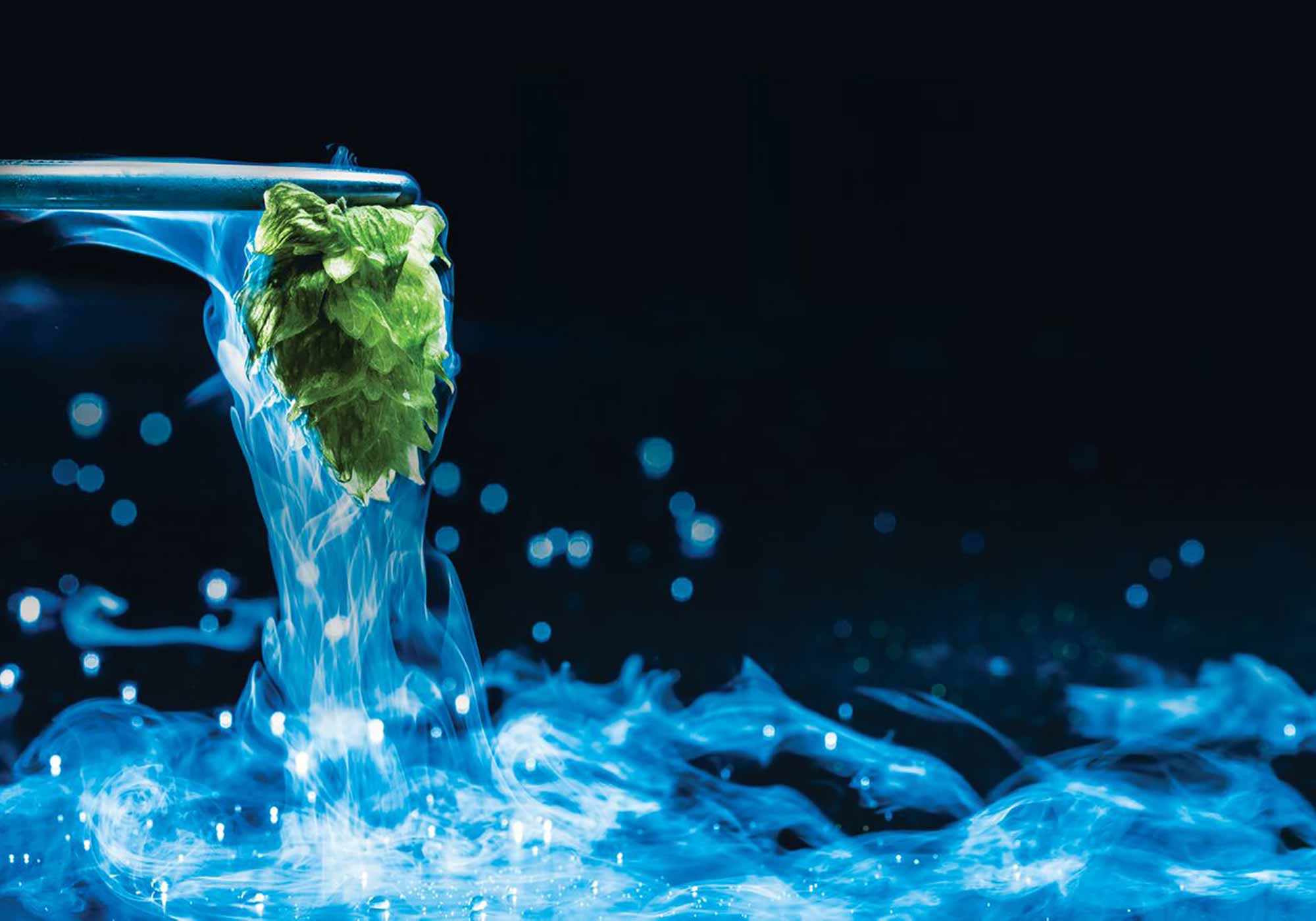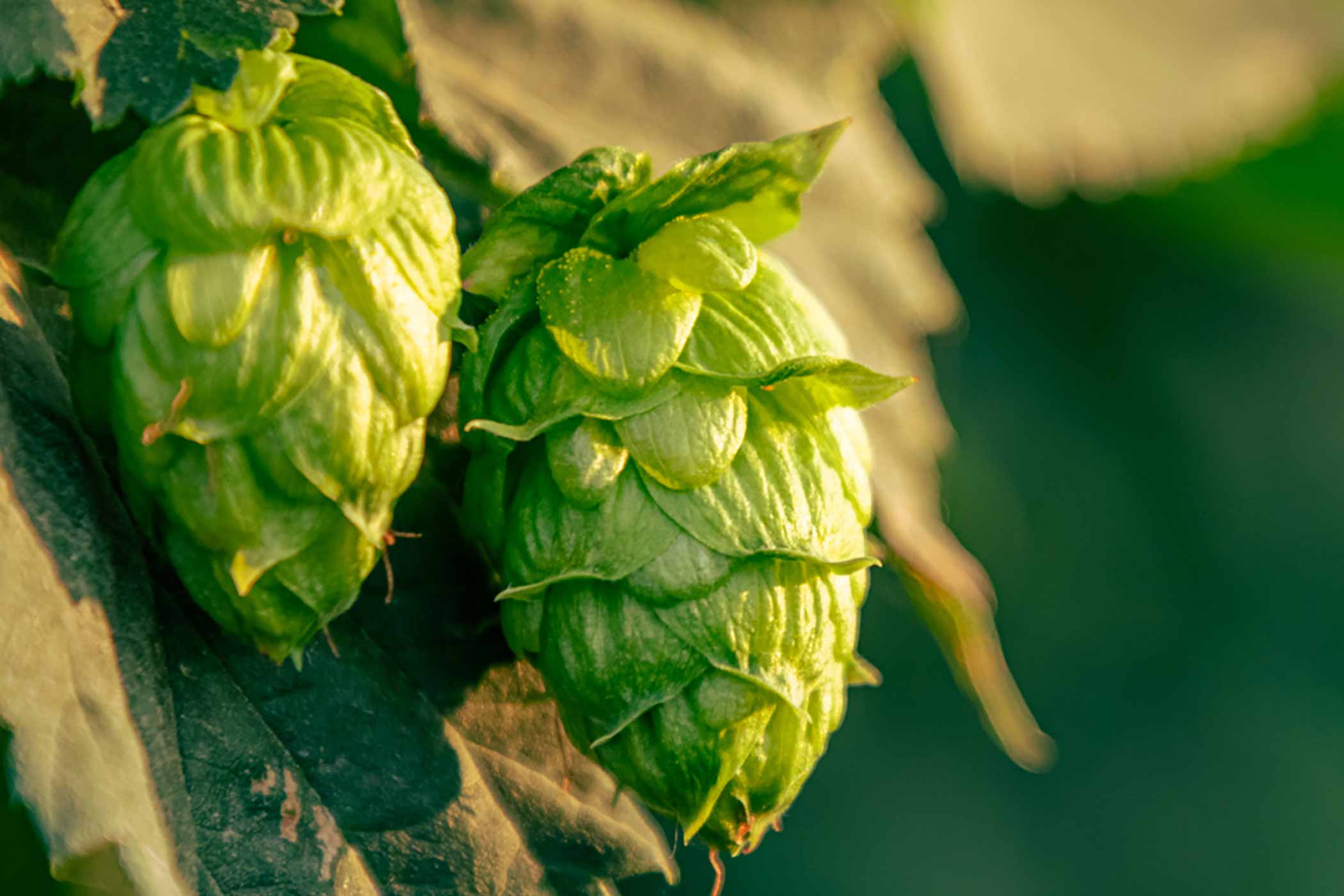Shop
The Four Hottest (and Coolest) Hop Trends
Hops are so hot. These trends are even hotter.
Here is a simple truth: Hops are hot. Oh, how we are all in love with those little green cones like Citra, Centennial, and Cascade that give our West Coast IPAs that dank, citrus-y bite. Or Azacca, Mosaic, and Galaxy that make our hazy IPAs super, mega, uber juicy. But beyond the bine, over the past few years we’ve been tracking these hot new trends in hop technology.
See, it’s not only the hottest hops on the market (according to an expert) that has brewers in a frenzy; it’s the technology around hops that’s become exciting too.
Revolutionary new techniques started by companies like Yakima Chief Hops (YCH), Brewers Supply Group (BSG), Oast House Oils, and more are finding ways to concentrate a hop’s potent power. By extracting just the good stuff within, these new processes have found ways to increase aroma and flavor and even combine multiple hops into one unique blend.
All with the goal to make your hazy IPAs juicier, your West Coast IPAs brighter and clearer, and your American IPAs more intense and flavorful.
We’ve covered each of these hottest hop trends in depth over the past few years, so based on our own reporting, here are what we see as the four hottest (and coolest) trends in hops.
The Four Hottest (and Coolest) Trends in Hops
Hop Oil Extracts with New Zealand Hops Debuts at Craft Brewers Conference
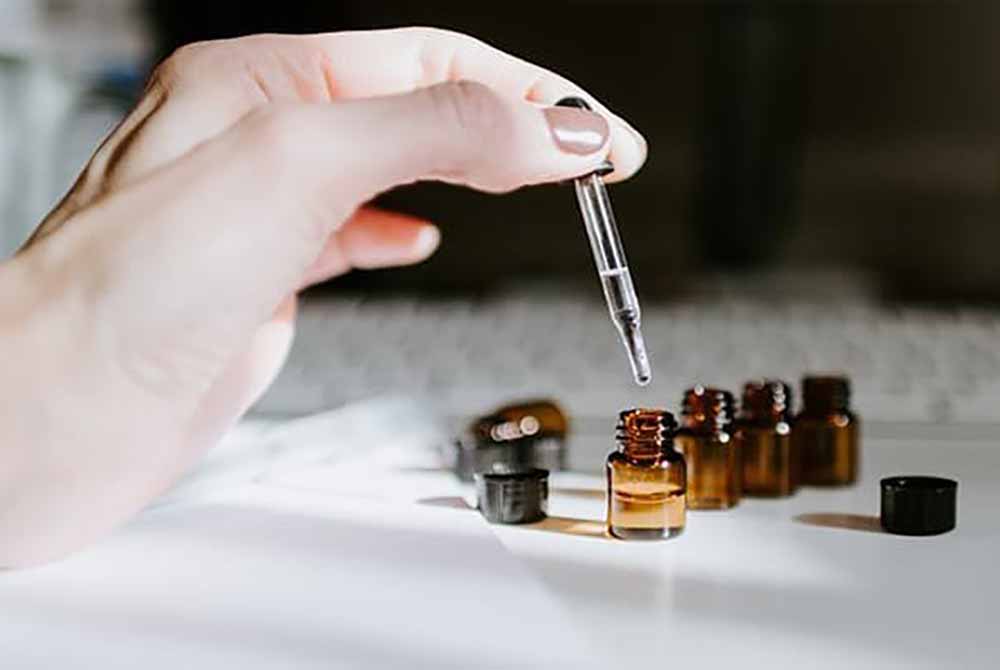
Photography courtesy of Craft Brewing Business

Photography courtesy of Craft Brewing Business
Hot off the press: NZ Hops and Totally Natural Solutions debuted the first hop oil extracts made from New Zealand hops at the Craft Brewers Conference in Minneapolis, MN, last week.
This is one of the newest hot hop trends.
Hop oil extracts replace traditional T-90 pellets. Whereas pellets are full of green material that gets discarded after brewing, hop oil extracts concentrate just on the essentials. And can be used in the post-fermentation stage of brewing.
The HopInspiration line derives from whole cone hops, but the oils allow a brewer more efficient hop usage. Plus, they create an incredible consistent product from batch to batch with a longer shelf life.
Perhaps most importantly, hop oils can save a brewery money because you need a smaller amount of it to achieve the same flavor and aroma of traditional hop pellets.
At the time of publication, NZ Hops Ltd. had hop oils available from the following Southern Hemisphere hops: Nectaron, Kohatu, Moutere, Rakau, Waimea, Wai-iti, and Taiheke.
What Are Cryo Hops?
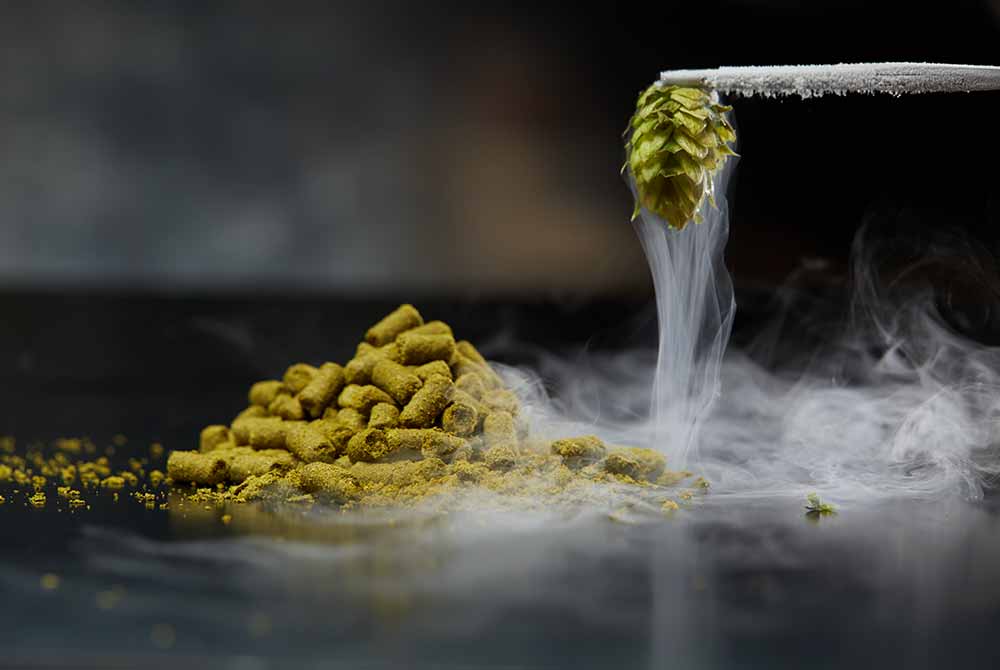
Photography courtesy of Yakima Chief Hops
YCH engineered Cryo Hops in 2016 to create a product hyper-focused on lupulin.
Lupulin is the yellow powder you might see clinging to the green leaves of a hop cone. A naturally occurring substance in hops, lupulin directly contributes to flavor and aroma.
In other words, lupulin is the golden goods that brewers really want. It’s those very essential acids and oils that brewers are trying to extract while making beer. Honing in on just the lupulin can be so important because brewers end up discarding the actual plant matter of a hop at the end of the boil.
“With the advent of New England IPAs and higher hopping rates, we tended to see in the market that brewers were suffering hard from heavy yield loss,” says Spencer Tielkemeier, East Division Lead and Brewing Innovations at YCH. “We thought, how can we produce a product designed to yield efficient and extremely high-quality, aromatic beers?”
Cryo Hops uses liquid nitrogen to quickly chill a raw hop to sub-zero temperature. After that, they shatter the hop, sifting through the “sand-like” remains to separate the leaf material from the lupulin. At this point the lupulin gets pressed into Cryo Hop pellets.
Undeniably, Cryo Hops have two main advantages.
Firstly, these Cryo Hops enhance the actual flavor and aroma of a beer. But secondly, and perhaps most importantly to a brewer, Cryo Hops make the brewing process more efficient.
Generally, lupulin-enriched products create a more intense hop aroma and flavor experience, as a more concentrated dose of lupulin builds a higher flavor profile in the final beer.
“I describe Cryo Hops as a high note, like an alto,” says Matt Speckenbach, Head Brewer at Hopworks Urban Brewery in Portland, Oregon. Speckenback uses YCH Cryo Hops in the brewery’s flagship Powell Cryo IPA. “It punches and cuts through everything else and it shines.”
Beyond boosting the final flavor, Cryo Hops also save brewers from losing beer. During the brewing process, green matter acts like tiny sponges, often soaking up liquid. But the yellow stuff doesn’t.
“With Cryo Hops, you’re not sponging up so much liquid in the bottom of the fermenter,” says Tielkemeier. “Brewers can create heavily hopped, super aromatic beers without losing yield.”
It’s an all-around win that makes Cryo Hops one of the hottest (or should we say coldest) hop trends out there. We’ve seen Cryo Hops pop up in beers from breweries including Hopworks Urban Brewery, Alvarado Street, Oakland United Beerworks, Pinthouse Pizza, and many more.
What Are Liquid Hop Terpenes?
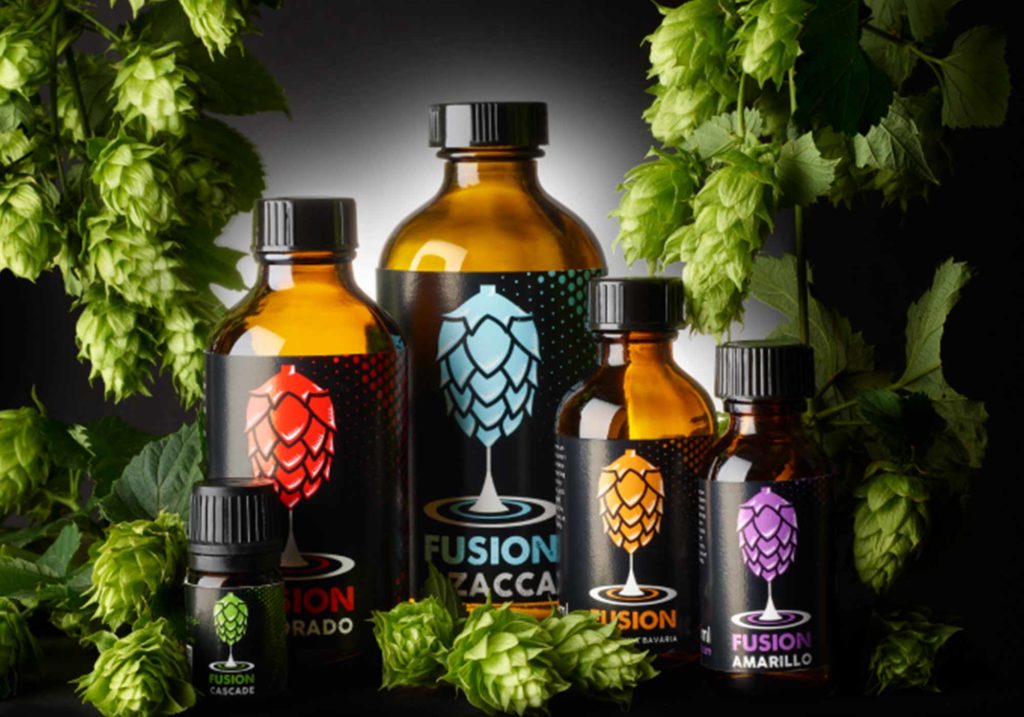
Photography courtesy of Oast House Oils
Most commonly referenced in connection with cannabis, terpenes are compounds responsible for the way that many plants taste and smell. They’re essential to any hop-forward beer. In essence, it’s terpenes that make your West Coast IPA taste and smell like grapefruit and pine. Or your hazy IPA impart notes and scents of mango and citrus. When brewers boil hops in wort to make beer, they’re bringing out many of the terpenes.
But what if someone could find a way to extract pure terpenes from the hop? Well, you’d have a pinpoint flavor and aroma bomb. One that also happens to help brewers achieve higher yields and brew more efficiently.
Oast House Oils, a company that specializes in supercritical CO2 extraction technology, did exactly that. With the help of Rob Kevwitch, the former owner of Grist Brewing and a Ph.D. in organic chemistry, the company started Isolate Labs Inc., a new business unit focused exclusively on using supercritical extraction machines to pull terpenes from hops. To Kevwitch’s knowledge, Oast House Oils is the first company to use supercritical CO2 as part of this process.
While the product (and the science behind it) is still fairly new, the benefits of liquid hop terpenes could make them the next big trend in hops.
And recently, breweries like New Image Brewing, Breckenridge Brewery, and Telluride Brewing Company have all experimented with the liquid form of hop terpenes—to great success.
What Are Hop Blends?
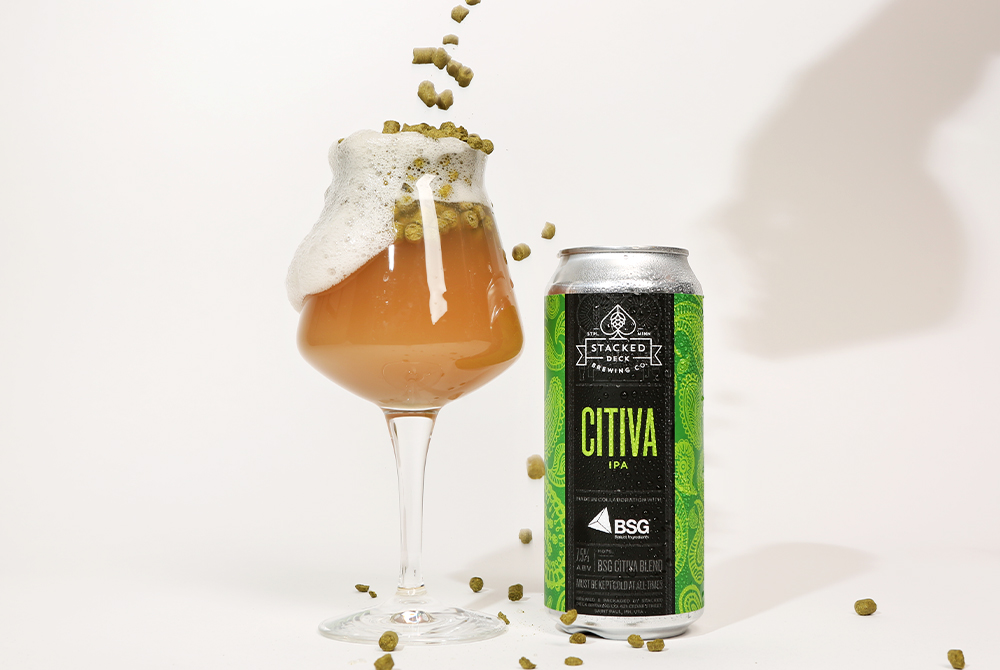
Photography courtesy of John A. Paradiso
Hop blends aren’t new per se. But they started out as “all the old shit growers couldn’t sell or the floor sweepings” says Eric Sannerud, former Hop Brand Manager at BSG.
But BSG Hops has completely revolutionized the game by taking something that used to be trash and turning it into treasure: BSG Custom Hop Blends.
BSG took a combination of a variety of hops (blends aren’t a single-hop varietal) and precisely composed them into a coherent collection.
Think of a hop blend like a soup marrying a number of high-quality ingredients to create one standout dish.
And the best part? These unique new products are not only revolutionizing consumers’ and brewers’ taste buds, but also their wallets.
It’s a win-win.
First and foremost, a hop blend drastically reduces the cost per pound of the ingredient. The average price of a single hop variety can reach incredibly high. And, while Sannerud notes that hop prices—much like the stock market—are constantly in flux and highly contextual, you’ll generally find that those big names like Citra, Mosaic, and Simcoe can run between $14 to $20 per pound. Nelson Sauvin, Galaxy, and Southern Hemisphere hops jump even higher to anywhere from ~$20 to $30 per pound.
Hop blends? They’ll often only cost a brewer between $10 to $11 per pound. “You don’t have to spend $20 a pound to have a banging IPA,” says Sannerud. “If we can accomplish similar outcomes with $10 to $11 hops….brewers have a better margin and can still deliver an incredible hop experience.”
Hop blends open up a door to a whole new magical world. “The universe of hops is enormous,” says Sannerud. “We have not even scratched the surface.”
But hop blends allow brewers to start to scratch that itch.
Want to make a blend that smells like bubblegum? How about one that is cannabis dank? What about a crispy boi blend? It’s all possible in the BSG Hop world with their Custom Hop Blends.
“If we start to design beers and recipes for aroma or flavor [as opposed to just hop name], then the world of hops opens up to us in a way we’re not ready for,” says Sannerud.
Even though the BSG’s Custom Hop Blends only started popping up last year, several breweries have already experimented with them, including Arbeiter Brewing, Liquid Love Brewing, and Stacked Deck Brewing Co.
HONORABLE MENTION: Phantasm, the Most “Unreal” New Ingredient in Beer
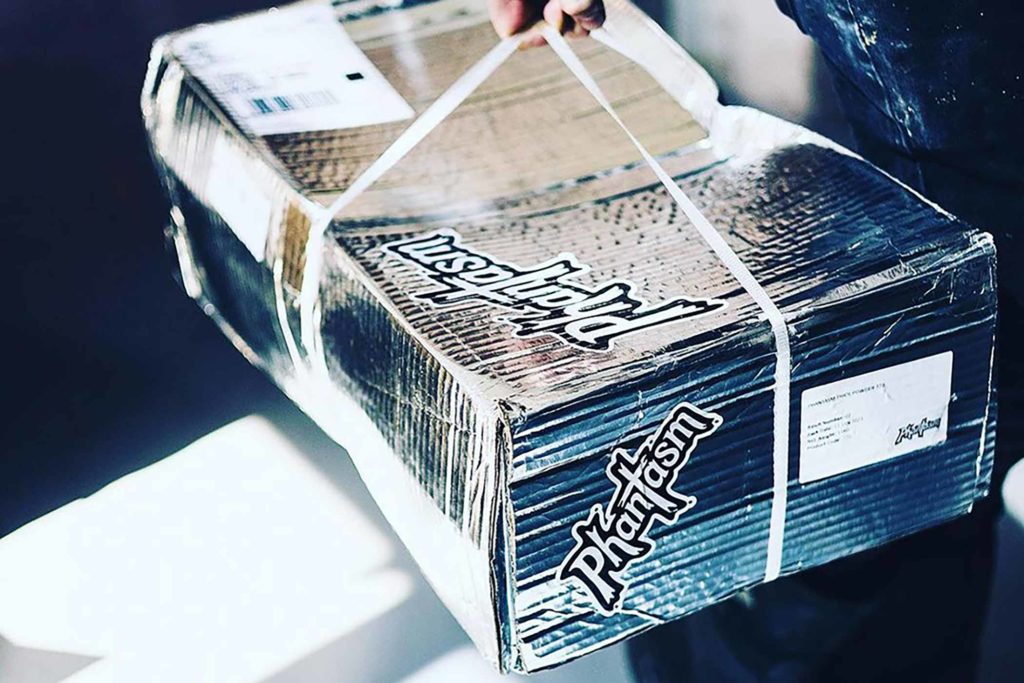
Photography courtesy of Phantasm NZ
Okay, you caught us: This one doesn’t exactly have anything to do with hops. But it’s just so cool we couldn’t resist. It’s making our hazy beer juicier, for gosh sakes! We didn’t think that was possible.
I mean why do we love hazy beer anyways? Answers will vary, of course. But it’s undeniable that we enjoy New England-style IPAs because they are uber juicy in both flavor and aroma. Big bursts of citrus, pineapple, grapefruit, mango, and more draw us into a hazy’s turbid depths. But what if we told you that brewers could make their hazies even juicier? That beers using this cool new ingredient can make other hazy IPAs seem like pale ales in comparison?
You’d probably want to try that beer, right?
Well thanks to Phantasm, a powder derived from Marlborough Sauvignon Blanc grapes in New Zealand, you can.
It’s the coolest new ingredient in beer.
One that requires quite a bit of experimentation to truly work its magic.
Consequently, Phantasm brings a whole new perspective to the adage “the juice is worth the squeeze.”
But trust us, it’s worth it.
Or don’t trust us. Trust the breweries that have already added Phantasm into their beers: Other Half, WeldWerks, New Image, Alvarado Street, Bellwoods, Monkish, Fidens (the best brewery you’ve never heard of), Green Cheek, and so many more.
With a list of breweries like that…enough said.

